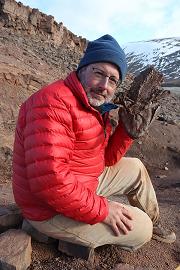
The first of three PBS episodes of “Your Inner Fish” debuted Wednesday, April 9. Confusingly, the second episode of “Your Inner Fish,” due next Wednesday, is titled “Your Inner Reptile.” Fortunately, the content is clear, compelling, and entertaining; all attributes of the host as well, Neil Shubin. Given Shubin’s irrepressible enthusiasm, he could make shucking corn entertaining.
Right at the beginning, the camera roams through an anatomy lab where medical students are cutting apart (dissecting is the polite word) cadavers—dead people. In kindness to 99.9% of viewers, the camera angles did not give anyone cause to lose their cookies. The program takes us away from the cadavers to explore the concepts of shared anatomy and the tree of life. Just about the time we forget about the cadavers, Shubin returns to the anatomy lab and presents us with an arm and hand still connected to a cadaver. In a speeded-up sequence, he slices into the hand to reveal its tendons, muscles, and bones. I thoroughly appreciated this—but then I used to work in the operating rooms at San Francisco General Hospital. I did wonder what portion of the TV audience chose to look the other way.
The tendon tying this and the following episodes together is indeed the anatomy of humans and our similarity to the anatomy of our long dead ancestors and to the anatomy of the entire extant world of tetrapods. Repeatedly, Shubin nicely returns us to the topic of homologous structures for limbs, hands, innervations, and even gills. (We get to meet a woman with a vestigial gill on her head.) This segment of the program intertwines interesting bits of research in developmental biology.
PBS apparently went to the trouble of transporting Shubin and others back to the extreme arctic wilderness just to get footage to air; engaging footage at that. They took us to the desolate uninhabitable location where Shubin’s team found Tiktaalik, the fishapod. To show us how the area may have appeared 370 million years ago, special effects tilted, warmed, and covered the entire region in shallow water—except where Shubin stood. Nice touch.
Once again, Shubin emphasized homologous structures and then a commercial appeared. That was the only clue I had that Episode #1 was over.
I am ready for more and I’ll get that next week.
___
Watch Episode #1 at http://www.pbs.org/your-inner-fish/watch/
More about Tiktaalik at http://tiktaalik.uchicago.edu/
